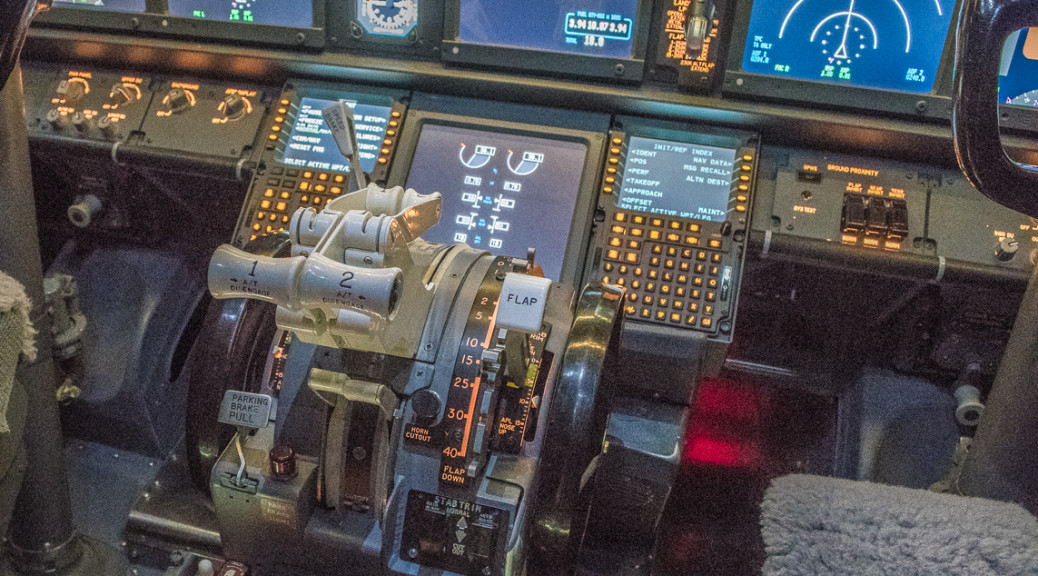
Bad simulator blogger. Eighteen months without an update. The truth is that I’ve kept very busy working towards establishing full functionality. The sim is now operational and flying regularly. Almost everything works, and over the next few weeks I will be bringing you up to speed on everything I’ve done since my last post.
This update today concerns the FMS/CDU (Flight Management System/Control Data Unit) bay just under the main instrument panel (MIP) and forward of the throttle quadrant (TQ). As described in a previous post, the width of this bay is one of the major differences between the cockpit of a classic model 737, which I obtained in 2010, and the the NG model, which I am attempting to simulate.
As I wanted to retain the original equipment manufacturer (OEM = Boeing) rudder pedals, with their linkages and height adjustment mechanisms, I had to figure out a way to taper the FMS/CDU bay so that it remained narrow at the bottom, but was wide enough at the top to fit the two control units, as well as the lower EICAS screen. The difference in width is about 1.75 inches, with the NG model being wider. In the real airplane, the rudder pedals in the NG are more narrow to allow the overall width of the cockpit to remain the same.
My strategy was to retain the OEM frame at the bottom, and use a bay and FMS units built by Flight Deck Solutions (FDS) for the top. The OEM rudder pedals are fairly tall, and the FDS FMS units are fairly deep, having been designed to sit on an angled base when used on a desktop.

After a number of rounds of measurements, I cut off the top of the OEM base and fitted the sides with 1 inch angle aluminum. I then cut off the top of the FDS bay. I retained the interior shelf from the FDS bay and cut it so it would fit inside the OEM base, allowing a place to mount 4 interface cards, a PC power supply (to provide 5 and 12 volt power) and a USB hub. These components provide interfaces to all of the electronics for the MIP, FMS/CDU units, OEM bell/clacker box, lower EICAS screen and associated panel lighting.

The cut off top of the FDS bay was similarly fitted with 1 inch angle aluminum. As the MIP was also an FDS product, the forward edge of the FMS/CDU bay had pre-drilled holes that allowed the two components to mate up correctly. Lining up the aft edge of the FMS/CDU bay to the forward edge of the TQ required a number of dry fit adjustments prior to actually drilling holes to set the proper angle for the three screens.


After assembly, I used the OEM trim pieces to cover the aft edge of my creation. The top of the trim doesn’t quite match up to the aft edge of the FDS bay. Most visitors to the sim never notice because there are so many things to look at and explore. The rudder pedals at the most aft position (for those pilots who are most vertically challenged) clear the bottom of the cut off FDS bay by less than 1/4 inch, but there is no play in these controls as everything is firmly in place.Eventually I will fabricate some custom trim for the outside of this contraption, but for now I am very pleased with the result.


